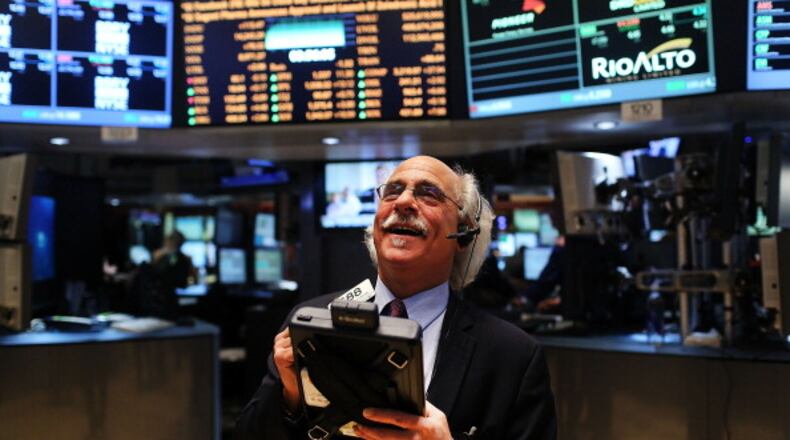Dow Jones industrial average reaches new all-time high
New high: 14253.77 set Tuesday
Old high: 14164.53 set Oct. 9, 2007
Tuesday’s closing prices of area stocks
AK Steel: $3.48, down 6 cents, or 1.6 percent
Kroger: $29.59, up 12 cents, or 0.4 percent (new 52-week high)
Fifth Third: unchanged at $16.02
Navistar: $24.91, up $1.30, or 5.5 percent
Procter & Gamble: $77.05, up 37 cents, or 0.4 percent
The Dow has never been higher.
The Dow Jones industrial average surged 125 points Tuesday, reaching 14,253.77 and beating its previous record high set in October 2007.
The gains represent a remarkable comeback for the stock market. The Dow has more than doubled since falling to a low of 6,547 in March 2009 following the financial crisis and the Great Recession. Stocks have rebounded sharply since then with the help of a large dose of stimulus from the Federal Reserve, even as the U.S. economy has failed to get out of first gear.
The Dow is already up 9 percent so far this year, which many would consider a respectable gain for a full year.
At James Investment Research Inc. in Beavercreek, president and CEO Barry James said the strength of the rally is unusual. James is also president of James Advantage Funds, the mutual fund family.
“You never underestimate a bull market run and how high it can go,” James said. “We have been in a rally and our indicators were strong at the beginning of the year. The risks are rising, but they are not so high yet that you should run for the exits.”
But this rally is out of the ordinary, he added, because years that follow presidential elections typically offer low returns. But now, with the market up significantly, investors seem to be piling in out of fear of missing out, he said.
“Investors can jump into the pot when it’s boiling. But we are happy about this and think it can still go on,” James said.
Cautionary signs are showing up as well, he added. The new highs are coming with decreases in total volume. Corporate insiders are selling at a rate not seen since the Dow last hit highs in 2007.
“We believe there is another correction or a significant one down the pike, but don’t know the timing yet,” James said.
The rally, for all its vigor, wasn’t sparking that much activity — buying or selling — at the Kettering office of Josh Taylor, financial adviser for the Edward Jones investment firm.
“Our clients on the whole are excited, but the majority of our investors have a buy and hold philosophy,” Taylor said. “Companies like Procter and Gamble and Wal-Mart have been in these cycles before that convince investors to hang in there.”
“There is an element of a self-fulfilling prophecy here,” said Jim Brock, professor of economics at Miami University. “All the talk is the market is up in January and February, and that attracts people in. My sense it works in both directions. If people think it will fall, it will fall. Psychology counts for a lot.”
Also, a low interest rate policy by the Federal Reserve is helping push people into stocks. “If interest rates were higher, they would put their money in a CD.”
The last time the Dow was this high, Apple had just sold its first iPhone and George W. Bush had another year as president. The U.S. housing market had yet to implode, and the financial crisis that brought down Lehman Brothers was still a year away.
Despite the stunning gains in the stock market since then, the U.S. economy has not fared nearly as well. Unemployment was just 4.7 percent when the Dow last reached a record, versus 7.9 percent today.
Stocks have rallied powerfully this year, impressing even market’s most ardent skeptics, on optimism that the housing market is recovering and companies are slowly starting to hire again. Strong corporate earnings have also helped increase demand.
The market has benefited from economic stimulus from the Federal Reserve and other global central banks. The U.S. central bank is buying $85 billion each month in Treasury bonds and mortgage-backed securities to keep long-term interest rates very low.
About the Author
